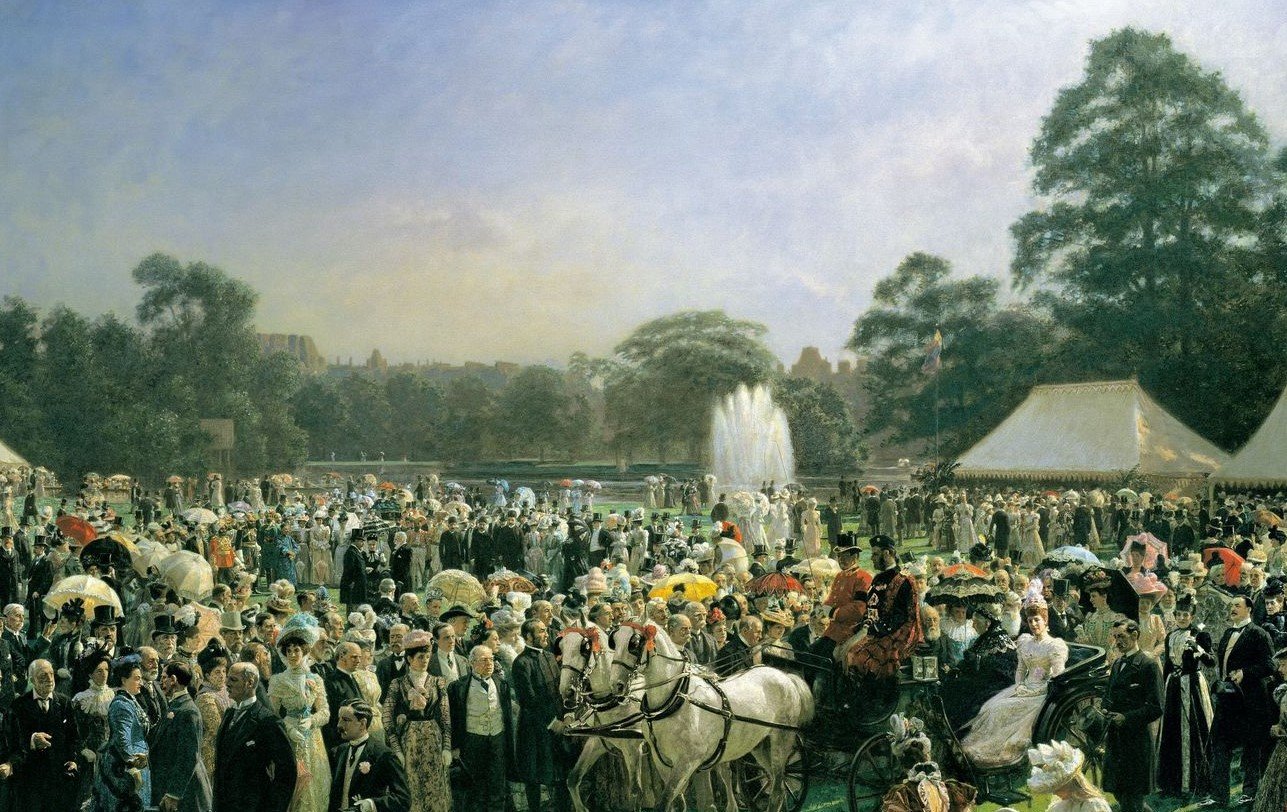
Royal Gardens
Depictions of the gardens at Windsor Castle and other royal residences
General Design of a Transparent Illumination, proposed to have been Executed in the Queen's Garden in Honour of His Majesty's Birthday, The 4th June 1763
1763RCIN 917643.a
Buckingham House and its garden entered royal ownership in 1762 when it was purchased by George III from Sir Charles Sheffield, the illegitimate son of the Duke of Buckingham, for the price of £28,000. It was acquired as a private family home for his consort Queen Charlotte and became known as the Queen’s House. In the painting by Johan Zoffany shown here, Queen Charlotte is depicted with her two eldest sons on the ground floor of Buckingham House.
While much expense was spent on updating the house, less attention was paid to the garden. However, some changes were made with the canal being filled in and parterres removed to reflect the change in fashion in garden design with formality giving way to a more pastoral landscape. By the end of the eighteenth century, the garden had also been expanded to its current size of 39 acres (16 hectares).
It was during this period that the first of many royal events were hosted in the garden. To celebrate her husband’s 25th birthday in 1763, Queen Charlotte organised a surprise party comprising of fireworks and illuminations. A series of designs for temporary structures to be erected in the gardens were created by the Scottish architect Robert Adam. They include this example which shows an elaborate screen decorated with large back-lit pictures within the main architectural features. Known as ‘transparencies’, these pictures alluded to the king’s role as peace-maker following the signing of the Treaty of Paris and the end of the Seven Years’ War earlier in the year. Ultimately, this design was never realised, and a simpler structure was used for the birthday celebrations.







